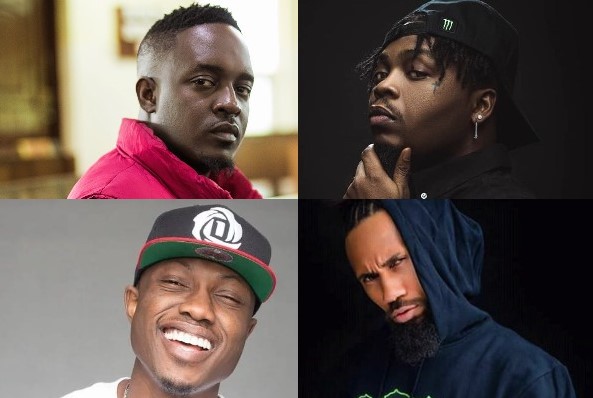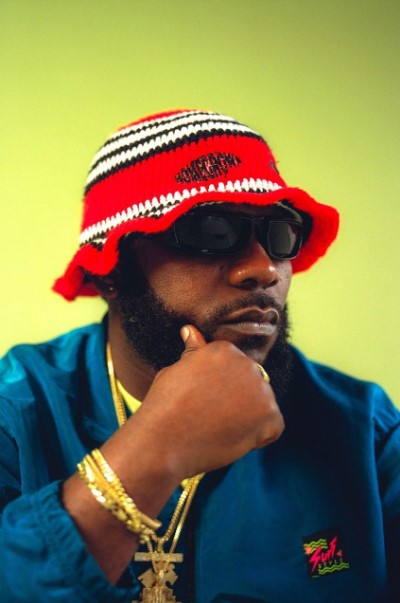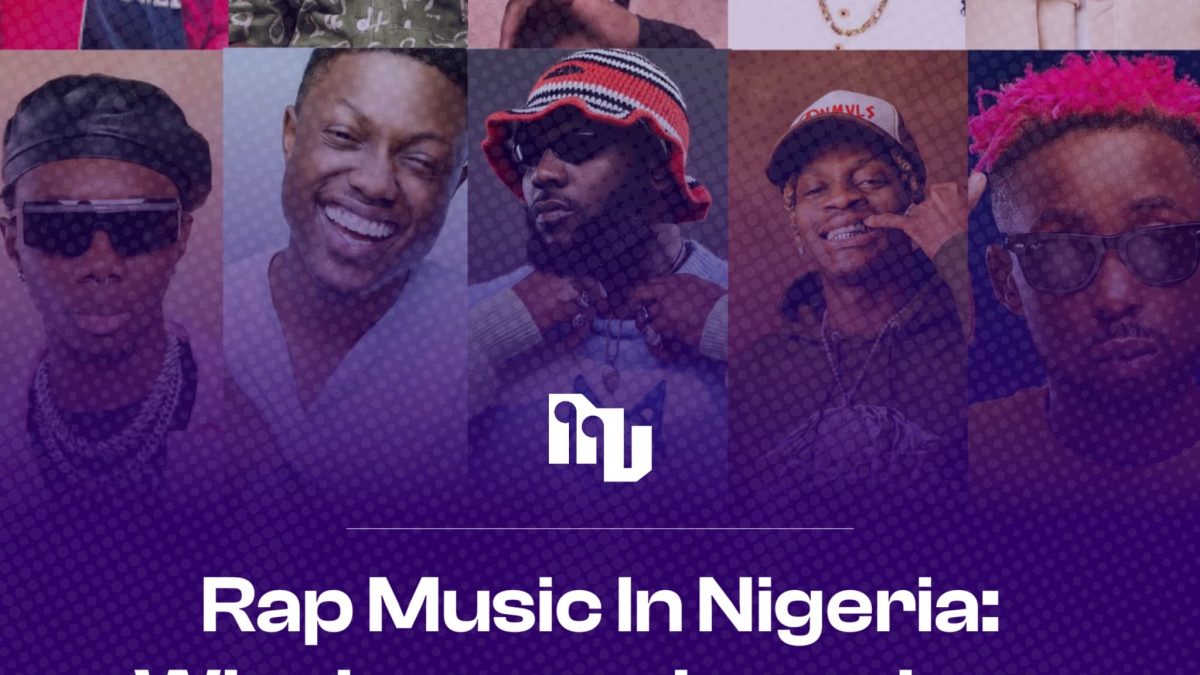The Evolution Of Rap Music In Nigeria
Rap music in Nigeria has undergone significant transformations over the years, morphing through different eras and battling for its place in the mainstream. Actually, it’s been in circulation ever since the early 2000s and possibly before I was born with the likes of Modenine, Ruggedman, and Naeto C, to the modern wave of Ladipoe, Blaqbonez, and Odumodu Blvck, the genre has constantly evolved.
If you remember the “I don’t listen to Nigerian music” phase, the time when Afrobeats wasn’t really a worldwide sensation that it is now, you’ll know that foreign rap music was very popular and once dominated local playlists. However, despite its growth and popularity, it’s not the shit that is popping right now in our music scene and the sub-genre remains one of the most misunderstood and underappreciated sub-genres in Nigerian music industry today.
The Misconception Of Rap Music In Nigeria
One of the oldest misconceptions is that rap is a genre of music, rather than a style of delivery or basically a sub-genre under hip-hop. There is this limited perspective assumes that rap should only be paired with hip-hop beats, characterized by fast-paced delivery, intricate cadences, wordplay, and punchlines. While this perception isn’t entirely baseless (given hip-hop’s historical roots) it’s an outdated take.
Rapping is an art form, a core element of hip-hop, which if broken down, is like a full ecosystem consisting of the clothings, dance, art (graffiti), beatboxing etc. So you can take this element (rap) out of hip-hop and infuse it into any other genre of music, just like how you have elements of jazz, a distinct music genre, having its elements in rock, soul, afrobeats, amapiano etc to create jazz fusion, a subgenre of jazz.
However, due to its foreign origins, Nigerian listeners often struggle to connect with it unless it’s presented in a culturally familiar way.
Why Nigerian Rap Struggles To Survive
Perhaps the Nigerian audience do not seem particularly invested in decoding witty lyrics because the sound is alien to the country. I mean, the wittiest bars and punchlines fly over the heads of many people over here. I’ve witnessed that happen in real time (I don’t know if I should blame the lack of comprehension due to the high illiteracy level) but it is easier for Nigerians to embrace an act like Wizkid because the fundamentals of the Nigerian culture is embedded in his music over a Mode 9 replicating an alien culture and throwing around robust words.
Rap is, in fact, a highly adaptable and dynamic style of delivery that can be layered on top of various genres and sub-genres, from R&B and Afrobeats to country music and grime. This versatility has given rise to a new wave of Nigerian rappers who are experimenting with different sounds and styles. In essence, the same way Adele will sing and pour her heart out on an instrumental, her fellow Brit artiste and rapper Stormzy can do the same by rapping on the same beat. Thing is, it’s experimental, and going against the grain to deliver on such type beats takes a lot of balls and expertise.
The Dilemma Of Rap Music In Nigeria
In the past decade, artists like M.I Abaga and Vector have been at the forefront of this evolution, pushing the boundaries of what rap music can sound like. They’ve incorporated elements of traditional Nigerian music, Highlife, and Fuji into their sound, creating a unique blend that is both authentic and innovative.
You May Also Like: SYLV!A makes her debut with new single “2Nyte”
The likes of Olamide, Phyno, and Reminisce have also made significant contributions to the growth of rap music in Nigeria by rapping in their ethnic languages. They’ve successfully merged rap with popular genres like Afrobeats and street pop, making it more accessible to a wider audience.
While English-speaking rappers tweak their sound with commercial hooks to appeal to the masses, these indigenous rappers stick to gritty beats and hardcore rap choruses, and the streets eats it all up. The difference in audience reaction is quite obvious. Compare a Ladipoe or a Blaqbonez performance to an Olamide or an Odumodublvck set. Brother, the crowd might vibe to Ladipoe’s chorus, but when the likes of Olamide steps up, fans aren’t just singing along, they’re rapping entire verses word for word.

Why? Both groups are telling similar stories; tales of hustle, success, and survival. But while English-speaking rappers lace their lyrics with foreign slang, accents, and Western mannerisms that feel distant to the average listener, indigenous rappers sound like home. They speak the language of the streets, their flows echoing the raw energy and familiarity that makes their music impossible to ignore.
Adapt or Fade
Let’s be real though, some people still think rap is just about baggy jeans, gold chains, and yelling aggressive bars unto a mic. And if you don’t make tick these boxes, you’re not considered a rapper. But even beyond the stereotypes, the struggle runs deeper. No matter how much our indigenous rap acts have tried to repackage the hip-hop sound by blending it with afrobeats, grime, or even amapiano, rap music in Nigeria is still fighting for its dear life.
Sure, these fusions have kept the genre on its feet, but let’s not kid ourselves, rap alone can’t sustain most of these artistes. That’s why many of them, after years of pushing, eventually get frustrated and either switch lanes or water down their sound for something more commercially viable. It’s not about skill or creativity or ‘love for the game’; it’s about survival. And when survival is on the line, the choice becomes simple, adapt or fade out.
The Ones Who Stay True vs. The Ones Who Reinvent
But not every rapper is willing to bend or switch things up. Poe, PsychoYP, and Khali Abdu are still out here dropping solid hip-hop, but it feels like they’re performing in an empty room. The beats knock, the bars hit, but the applause? Silence.
Then, there are those who make the most out of it, take Odumodublvck, for example. The guy’s a genius, and his music is a testament to the dynamic nature of rap. He raps, sings, and blends different styles seamlessly. But ask some people, and they’ll say, “Odumodublvck isn’t a rapper.” I get why they’d think that, his sound isn’t boxed into the traditional rap mold. But to claim he can’t rap? Makes me wonder if y’all just play his music for vibes and don’t actually listen to the bars he drops once in a while.

The issue is that people are stuck in their old ways of thinking. They can’t seem to wrap their heads around the fact that rap can be more than just hip-hop beats and fast-paced rhymes. Odumodublvck’s success proves that rap can be dynamic, versatile, and, dare I say it, genre-bending.
You May Also Like: Koller – “Calypso (Alcohol)”: The electric nights of Lagos
As the Nigerian music scene continues to evolve, we need to break free from these misconceptions. Rap isn’t dying—it’s changing. And if we want it to thrive, we need to embrace that evolution.
So, the next time someone says, “Odumodublvck isn’t a rapper,” Malon is telling you to correct them and say, “Actually, he’s a genius who’s pushing the boundaries of what rap can be.”
Final Thoughts: The Future of Nigerian Rap
Rap in Nigeria isn’t going anywhere. Despite its struggles, which I’ll blame on both sides: the audience that won’t pay attention and the artists who refuse to adapt. Nonetheless, it’s shifting, adapting, and breaking barriers. The key to its survival lies in acceptance and innovation. Whether through language, rhythm, or fusion with indigenous sounds, Nigerian rappers are proving that the genre isn’t just alive, it’s evolving into something bigger than we ever imagined.
Related posts
Subscribe
* You will receive the latest news and updates on your favorite celebrities!


